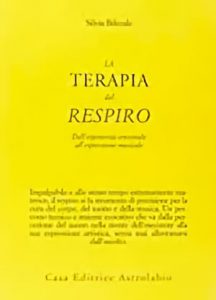Article index
The breath in singing
As I would like you ... as I would like you, I would like, I would like ...
Whenever we turn listening to the breath, the first reaction is the automatic, involuntary correction, dictated by an expectation before even by a judgment. As we would like it, it seems to overcome the question in speed as it is.
Certainly the breath contains intrinsic dangers that listening does not always want to know: his changingness, his ability to reveal me parts of me still not known, his power or his closure and much more.
But this time we have a need that cannot submit to the whims of breathing: singing, acting, the artistic declination of the voice made of rules and at the same time kneaded of expressive freedom.
How I wish it was my breath in singing?
And then the question of how I wish it was my breath. Which I believe that they are the ingredients necessary to have a beautiful, powerful and sensitive voice, a free and precise articulation, a fast and effective air intake, a control over the movement of the economic and elastic diaphragm. We would all like to stop worrying about the breath and be sure that it will be our safety network and that it will retain its "natural" characteristics even when we are called in demanding vocal passages or in unusual rhythms or in very exciting performances.
The summit from which I would always like to leave is what accompanies my research: letting the air enter, letting it come out, wait for the break that a new inspiration is born. The entire respiratory cycle is voice, not only the exhalation. And the entire cycle is defined by qualities such as leaving and waiting. He puts confidence at stake.
 We have already dealt with in different locations the profound value that this arrangement towards the fluidity of the continuous exchange between inside and outside and its awareness assumes over time: to let the air enter means to build a relaxed, welcoming, elastic body dimension of all the accessory muscles inspiration. It means opening spaces of breath that will become (if expertly toned) spaces of resonance and at the same time places for processing creative processes. It means building the body of sound in the direction of recollection and relaxation instead of the will to contract muscle groups.
We have already dealt with in different locations the profound value that this arrangement towards the fluidity of the continuous exchange between inside and outside and its awareness assumes over time: to let the air enter means to build a relaxed, welcoming, elastic body dimension of all the accessory muscles inspiration. It means opening spaces of breath that will become (if expertly toned) spaces of resonance and at the same time places for processing creative processes. It means building the body of sound in the direction of recollection and relaxation instead of the will to contract muscle groups.
How I can achieve all this and why it is functional to the realization of my desires expressed shortly before is our task.
The breath does not respond well to prescriptive pedagogy and works centered on the control. We can control the breath for a short time and certainly with difficulty, probably creating rigidity and non -comfortable sensations.
But this does not make us surrender, we have our wishes to be fulfilled.
Listen to your breath
In fact, we have other very precious tools, many of which supported by the most recent scientific research. The first is listening: listening intended as a sensory experience, better multisensory, and therefore cognitive in all respects.
Listening to your breath and bringing it to awareness and the possibility of giving it the word is the first step towards change.
Listening to the breath by placing your hands on your chest, allowing yourself time, waiting for listening to listening to it by moving it under our hands is a simple experience that reveals an extraordinary tool. I sit and listen to the movement of my breath trying to grasp all the qualities: the rhythm, the space, the directions, the strength, the emotional color.
Then I put my hands on my chest and I get to listen and wait. The listening experience will be the engine of change. Listen to listen. The breath slowly will move under my hands and I will feel the thoracic cage move.
Before delicately then always clarifying. It is listening that moves the breath. And it is the experience of awareness that I make of this movement that sets the process of change in motion.
My body, and my mind, experience a new condition, in this case of the expansion of the thoracic cage (Ouch how many tabu !!!) , in an emotionally significant context, because the experience is important for me, e Thus a new body scheme is structured which will enrich the existing one and dig its mnemonic traces through the repetition of experience, always within a context of meaning and awareness.
Let the breath
But listening is not a magic wand and so I can need small movements connected with the breath that will allow me to acquire specific qualities in precise body districts.
 I will always look for a movement that comes from breath, that is brought from breath and therefore connected through muscle chains to the respiratory muscles, and never a movement that regulates the breath. In this way I will be able to draw the map of my body that breathes, descend into the abysses of pelvic and perineal respiration, leave freedom of the breath along the spine or feel the presence of my back through the expansion of the opening in that part.
I will always look for a movement that comes from breath, that is brought from breath and therefore connected through muscle chains to the respiratory muscles, and never a movement that regulates the breath. In this way I will be able to draw the map of my body that breathes, descend into the abysses of pelvic and perineal respiration, leave freedom of the breath along the spine or feel the presence of my back through the expansion of the opening in that part.
I will be able to let the breath open the latest ribs, without having to exercise any pressure, exploiting the thoracic kinesiology.
Letting the air enter is a real active disposition to allow the whole body to breathe and that the voice exists before everything inside me.
In this way I have already conquered many of the desired qualities: the relaxation in the inspire allows in fact a fast, effective, measured air intake on needs because regulated from the inside; The opening of the respiratory spaces has me towards the possibility of letting them vibrate and enriching, therefore, my voice of other resonators; The freedom of the movement of the diaphragm promotes the construction of the supports; And again, relaxation is essential to obtain a good articulation. Without forgetting that the recollection and welcome will put me in touch with my feeling and my expressiveness.
The same rules I can apply them to the epilation: let the air out. In singing, in acting, in dance the exhale becomes a voice and gesture, but must not carry the "labors" of the voice behind. In order for the voice to walk fluid and supported, the exhalation must be able to preserve the quality of letting out and at the same time feeding on the tonicity necessary to manage the underglotic pressure. A real job as a balance between leaving and holding.
The immersion in the world of breathing should never be aimed at a purpose, but this does not mean that it has no objectives. The goals are internal, they arise from my needs and desires, that is, from my feeling. And so the pause will also find its meaning of third party capable of separating and marking, it will emphasize a new birth, will give vigor to the impulse of the hopes and will put me every time in front of the trust in my body.
The breath that changes and moves sometimes disappoints us, but always develops, opens. Perhaps he can only become reliable when he tries confidence.









